
 Many eons ago, my friend Mewa Singh wrote:
Many eons ago, my friend Mewa Singh wrote:
Most Sikh organizations’ backbone tend to be its Kaurs.[link]
[As a side note, kaptaan, where did you go?] I definitely second that thought. A common lament that I often hear from some Sikh men is that somehow Sikh women are somehow lacking in terms of their commitment to the faith. I do not subscribe to this theory, and would actually refute it by Mewa Singh’s observation quoted above. By far the majority of the activists that I have ever encountered have all been Kaurs, despite the often blind Sikh organizations. The banal complaints of some Sikh men, for me, are just that – banal complaints.
Still, as an agent of change within the community, I believe a glance at the structural problems within our religious community is warranted. A recent spate of articles has made me wish to visit the issue of female Granthis
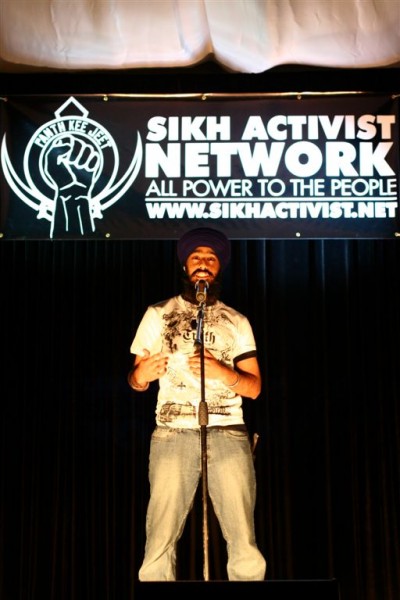
It is often said that a revolution begins not with the sword but with the pen. However, last Friday night in a packed banquet hall in the Toronto suburb of Malton, I witnessed a revolution begin with the microphone.
At an event entitled “When Lions Roar”, fantastically organized by the Sikh Activist Network, one young artist after another got on to the mike and paid homage to the lives destroyed in 1984. I was blown away by the talent and passion displayed by the performers. Through the art of spoken word, music, and action, each of the 26 acts put a different face on the impact of June 1984. They were all unique in their perspective, but all shared one common thread: 1984 is just too important to forget.
Over 1000 people gathered to attend the 4+ hour event. They covered the entire spectrum of Sikh life. This was not your typical retreat and kirtan crowd. In fact, the diversity of performers and audience has challenged me to rethink my stereotypes about who cares about 1984 and the future of the Sikh panth. Individuals that I would have never suspected of having even a passing interest in Sikhi or the Sikh community, would come up to the mike and speak with such energy, insight and emotion. They often reduced me to tears. And most amazing was the fact that almost all of them weren’t even alive in June 1984.
For a thirty-something guy like me who has always considered myself part of the “youth”, it was indeed a little bit humbling to realize that, while I’d probably still be the youngest guy at a Youth Akali Dal meeting, I’m now probably a generation or two above the youngest Sikh leaders. Which means me and my fellow Generation X-ers need to spend less time trying to do it all ourselves, and more time using our resources to enable the next wave of younger Sikhs to establish their own voice and institutions. We were the first generation coming through the diaspora, with little support from our elders. However, we can make it easier on our younger brothers and sisters. We can provide them seed funding to start their dreams, connect them those that can help them along the path, and help coach them through their challenges.
As you’ll see from the videos and photos, the next generation has indeed stepped up, their language of change is hip-hop and I think they’re gonna be alright.
Click through for videos and pictures.
 This past weekend Wal-Mart opened its first* Indian-based store in Amritsar, spreading its global brand to one of the fastest-growing markets in the world. As part of a larger strategy to develop a presence in India, this is the first of fifteen new stores that will open over the next few years. [source]
This past weekend Wal-Mart opened its first* Indian-based store in Amritsar, spreading its global brand to one of the fastest-growing markets in the world. As part of a larger strategy to develop a presence in India, this is the first of fifteen new stores that will open over the next few years. [source]
However, instead of targetting low-income consumers and discount shoppers, Wal-Mart India’s business model focuses on wholesales to small shop stand owners. This decision seems largely based in regional market dynamics. Wal-Mart does not think it can crowd out a market share against small dhabas and the like, and instead opts for wholesaling:
Mr. Singh and the more than 10 million other tiny retailers in India are Wal-Mart’s greatest challenge and greatest opportunity. If it can win them over, they are likely to become its biggest customers. Anger them and they could use their political power to block expansion.
Wal-Mart entered with nary a whisper or protest, despite years of vocal opposition to big-box stores in the past. The WSJ cites the slowing economy, but I wonder to what extent choosing Amritsar, as opposed to metro Mumbai or Delhi, indicates Wal-Mart’s desire to build a presence in transitional, recessionary regional economies.
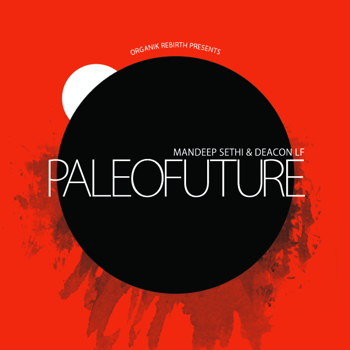 I know I have been posting about it much lately, but as full disclosure compels, I have helped with the organization in the past. A few weeks ago I posted about this weekend When Lions Roar in Toronto and Vancouver. It seems in the wake we have something in the making in Central California, Fresno. For regular readers of The Langar Hall, you’ve been introduced to the talents and music of Sikh Knowledge, Humble the Poet, GNE’s Saint Soulja, and even Mandeep Sethi. As a side note, Mandeep has the most amazing track I have ever heard by a hip-hop artist on 1984. Make sure to check it out.
I know I have been posting about it much lately, but as full disclosure compels, I have helped with the organization in the past. A few weeks ago I posted about this weekend When Lions Roar in Toronto and Vancouver. It seems in the wake we have something in the making in Central California, Fresno. For regular readers of The Langar Hall, you’ve been introduced to the talents and music of Sikh Knowledge, Humble the Poet, GNE’s Saint Soulja, and even Mandeep Sethi. As a side note, Mandeep has the most amazing track I have ever heard by a hip-hop artist on 1984. Make sure to check it out.
This month they will all be attending, participating, and performing at the Jakara Movement’s annual conference. With few seats left and this major addition, you will not want to miss this year’s conference as we come together to “Remember 1984.” The dates are June 18-21, 2009. Register TODAY to avoid a late fee. See you in Fresno.
This week I came across a couple of interesting stories out of the UK about how 1984 has since affected Sikhs. BBC Asian Network is currently previewing a radio documentary, hosted by Pops from Tigerstyle, discussing the impact Operation Bluestar has had on British Sikhs. The documentary discusses what impact, if any, 1984 has had on the Sikh conscience and the political activism that emerged. During that year, weekly covers of Des Pardes portrayed pictures of dead Sikhs – images that have stayed with many of us over the years. There existed a sense of hopelessness many Sikhs felt after only reading about and hearing of what was happening in Punjab. As one young Sikh woman states, “a record number of people took Amrit in that year”.
Before 1984 there were fears within the British Sikh community that young Sikhs, in particular, were assimilating into British way of life. A the time what Bluestar did was galvanize the community. .. and generally Sikhs were put on the spot by Operation Bluestar globally and in 1984, in the immediate aftermath, there was a great reassertion of Sikh identity – the visual representation of Sikh identity.
In a Guardian article yesterday, Sunny Hundal discusses how Operation Bluestar and the subsequent events have impacted Sikhs since.
Almost every year groups gather in London to commemorate these events and raise awareness of people still missing or locked up. Sometimes, the Indian flag is torched. In one report produced for the anniversary, the whole episode it is described as the “Sikhs’ Kristallnacht”. But while these facts are well documented and constantly discussed, there is less acknowledgement of how the episode has affected Sikhs since. [link]
He goes on to highlight three ways 1984 is still impacting Sikhs,
In remembrance of the 25th anniversary of the Darbar Sahib attack, I’m re-posting a piece I had written for sikhchic.com‘s “1984 & I” series:
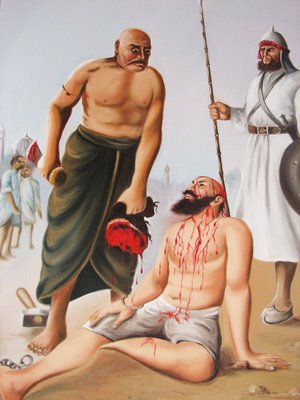
This Is Who We Are
Years ago, I was giving a local church group a tour of our Gurdwara. While I was showing them around the langar hall and explaining the history and significance of langar, I noticed that I was losing my audience. It took me a second to figure it out, but it appeared they were fixated on one of the images on the wall. It was the painting we’ve all seen of Bhai TaruSingh being scalped and blood running down his body. I’m not sure what shocked them more – the graphic painting itself, or the five-year-old boy sitting beneath it, quietly eating his meal.
For just a second, I put myself in their shoes. I looked around the room and saw pictures of Sikh martyrs from the 18th century – a man being boiled alive, a person being sawed in half, two little boys being bricked alive, and an old man with his fingers getting chopped off. And I thought to myself…is this really necessary, the depiction of these scenes in these surroundings?
I started to wonder: are these images really what we want to convey to our visitors? Shouldn’t we find something that depicts universality and love for humanity? Especially after 9/11, shouldn’t we be displaying a softer image of Sikhs? After all, this dining area is a place for us to share a common meal, and little children play down here, for God’s sake! Is this really appropriate?
But then it dawned on me …
This is who we are.
Over at Huffington Post, a lovely reflection on “The Cancer of Religious Narcissism” appeared recently. It’s point of orientation was the violence amongst Austrian Sikhs. The focus however, was on how religious narcissism is often the cause of such religious violence- when the slightest doctrinal difference leads to bloodshed… not only amongst Sikhs, but also amongst other faith communities. For example, in 2008, Greek and Armenian priests and worshippers exchanged blows at one of Christianity’s holiest shrines.
Catholics all over Europe have killed Protestants by the thousands and slaughtered their children, and Protestants have done the same. The Crusaders mounted genocidal attacks on Arabs and Jews. Modern efforts to win over moderates in Afghanistan are consistently sabotaged by fundamentalist military chaplains who tell our troops they’re fighting Satan and should be murdering anyone they can’t convert.
Precisely what the Imams are telling the Taliban. For homicidal proclivities seem endemic to most of the world’s major religions. Hindus and Muslims slaughter each other, as do Israelis and Palestinians, Sunnis and Shiites. And the Bible is filled with genocide, supposedly ordered by God. Why is this so?
The author’s’ answer: most organized religions are based on systems of belief. And we all want to believe our own tales are fact.
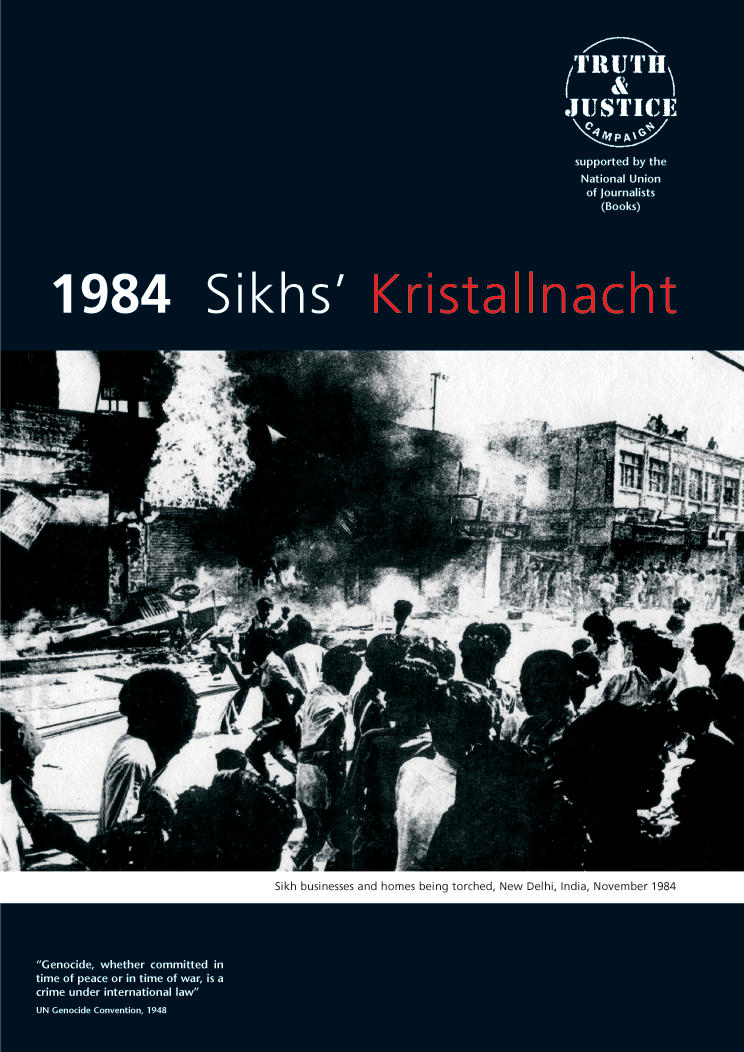 As we like to keep our readers updated, I wanted to let you know about some current events that you shouldn’t miss as well as some programs and resources that you can do with your own family and friends in your hometown.
As we like to keep our readers updated, I wanted to let you know about some current events that you shouldn’t miss as well as some programs and resources that you can do with your own family and friends in your hometown.
- The Jakara Movement conference: “Remember 1984: Reflect. Respond. React.” With limited days remaining, register BEFORE THURSDAY (June 4th, 2009) to avoid the late fee. I have written about it in the past. You won’t want to miss it.
- Last week, I wrote about the “Sukhmani Sahib for the Shaheeds” project. You can participate in your hometown by arranging a Sukhmani Sahib this weekend. Be part of a national group and download the packet from here. The packet contains, instructions, other upcoming events, and a special Benti to be read during the Ardas. Even if you can’t make it to Fresno for the conference, honor the memory of our Shaheeds through Sukhmani Sahib.
- Finally Sikh organizations have come together to off for free the Sikhs’ Kristallnacht booklet to educate Sikhs and non-Sikhs alike:
The Sikh Gurdwara is our community center. It is where we turn in times of fear (many Sikhs rushed to the Gurdwara after 9/11); it is where we turn in times of defense (the Battle Of Amritsar in June 1984); it is where we turn in times of crisis.
Even some 550 years later the House of Nanak provides refuge to all. As the world turns towards Pakistan and the military actions in the Swat Valley, I post this video from Al-Jazeera to remember the Sikhs in Pakistan and all that are facing dire conditions due to the turmoil.

Mark your calendars- the Kaur Foundation and the Asian Division of the Library of Congress have 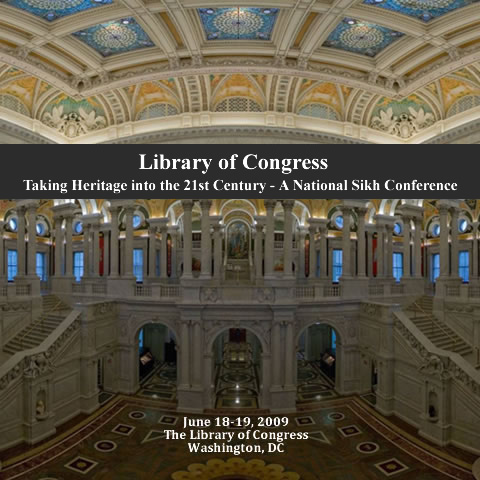 teamed up to undertake a unique initiative, to institutionalize knowledge by and about the Sikh community for future generations. The Library of Congress is the oldest federal cultural institution in the US, the largest library in the world, and the research wing of Congress. (LOC). The Sikh Collection Initiative is an effort to ensure that knowledge of and by Sikhs is collected and preserved for future generations. Given the tragic loss of valuable cultural and religious artifacts, manuscripts, and books from the Sikh Reference Library in the Darbar Sahib complex during Operation Bluestar, an initiative such as this begins to ensure that collective knowledge of our community will be preserved somewhere.
teamed up to undertake a unique initiative, to institutionalize knowledge by and about the Sikh community for future generations. The Library of Congress is the oldest federal cultural institution in the US, the largest library in the world, and the research wing of Congress. (LOC). The Sikh Collection Initiative is an effort to ensure that knowledge of and by Sikhs is collected and preserved for future generations. Given the tragic loss of valuable cultural and religious artifacts, manuscripts, and books from the Sikh Reference Library in the Darbar Sahib complex during Operation Bluestar, an initiative such as this begins to ensure that collective knowledge of our community will be preserved somewhere.
As our nation grows and becomes more diverse, it is critical that we appreciate and understand the different backgrounds of all that make this country great. Sikh Americans have significantly contributed to every field of human endeavor from technology, commerce, health, science, agriculture, to the arts – further enriching the cultural fabric of this land of immigrants.
Guest Blogged by Mewa Singh
No, I didn’t actually grow up with Inderjit Bains, but by the end of the post, you’ll get it.
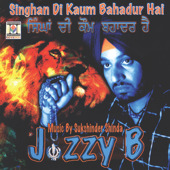 For those that have been following the North American bhangra scene, since its inception (remember, DJ Sunshine, DJ Guru, – I never liked DJ Jiten’s Hindi remixes – and, yes, even DJ Russell Peters), then the name Inderjit Bains needs no introduction.
For those that have been following the North American bhangra scene, since its inception (remember, DJ Sunshine, DJ Guru, – I never liked DJ Jiten’s Hindi remixes – and, yes, even DJ Russell Peters), then the name Inderjit Bains needs no introduction.
In North America, bhangra started with remix DJs in Toronto, but it took Inderjit Singh Bains to help change the scene. It was he, as a pioneer, that helped launch North America’s first true bhangra star – Jazzy B (although at the time, few of us would ever admit to it and spent most of our days hating on Jazzy’s various haircuts on bootleg tape covers).
The trajectory of North American bhangra, influenced in the early 1990s with the explosion of Westcoast gangster rap and especially G-funk, reshaped the global bhangra scene. While UK artists like Apache Indian and Bally Sagoo were doing their own type of hybridity with reggae and bhangra, Inderjit Bains was successful in bridging a ‘folk sound’ with hip-hop influenced bhangra beats. He found a formula. After the success of Jazzy B, he helped launch the career of Central California’s Bhinda Jatt (Bhinda took the early 90s gangster image, much further than Jazzy did, during that time), Madan Maddi and even Sukhshinder Shinda.
My fellow langa(w)r-iter wrote about his latest project – working with a kindred social activist spirit in the artist Taranampreet on her song “Teri Meri Bas: Sat Sri Akal”. While the focus on that post was on the role play women play men’s upkeep of the Sikh appearance (will we ever get a song on the role men play on the women’s upkeep of the Sikh appearance?), I want to take a bit of a different angle.
 As talking heads buzzed with news of President Obama’s nomination of Sonia Sotomayor to the Supreme Court, there has also been a flurry of commentary. Is her selection tokenizing? Is it triumphant? Is she smart enough? Is she nice enough? I don’t think it’s particularly useful to parse the commentary on Judge Sotomayor specifically — a lot of the back and forth parallels and reproduces the tropes that come out in any discussion addressing privilege and remediation.
As talking heads buzzed with news of President Obama’s nomination of Sonia Sotomayor to the Supreme Court, there has also been a flurry of commentary. Is her selection tokenizing? Is it triumphant? Is she smart enough? Is she nice enough? I don’t think it’s particularly useful to parse the commentary on Judge Sotomayor specifically — a lot of the back and forth parallels and reproduces the tropes that come out in any discussion addressing privilege and remediation.
The same day, a relatively lengthy commentary previewed on NPR’s morning edition. It argued that while Obama’s nomination was a triumph (if successful, Sotomayor will be the first woman of color and first Latina on the Court), the President should examine other forms of diversity on the bench. Specifically, he should appoint an LGBT Justice, next.
The recent caste-based violence in a Vienna and Punjab has shown us the horrible consequences of casteism. Sathnam Sanghera recently did a short report, “Caste Matters”, which investigates the possibility of legally outlawing caste-based discrimination in the UK.
Often we think caste-based discrimination is a 1st generation issue that becomes diluted in the Diaspora. However, CasteWatchUK has anecdotal evidence to show otherwise. They have lobbied to include caste-based discrimination as part of a stream-lined single equality act that would go into effect in 2010. If the group provided research evidence that caste-based discrimination existed in areas managed by the government, such as jobs and social services, then caste would be added to the equality act along with race, religion, and sexual orientation. However, this evidence has yet to be provided, aside from anecdotal examples from the work-place. The lack of aggregate evidence is only due to a lack of investigative research, as the anecdotal cases prove that it is indeed occurring.
You can listen the BBC Asian Network Report here.
Let’s us know what you think. Do you think caste-based discrimination should be included in equality acts in the Diaspora, such as the UK, USA, and Canada? If so, why?
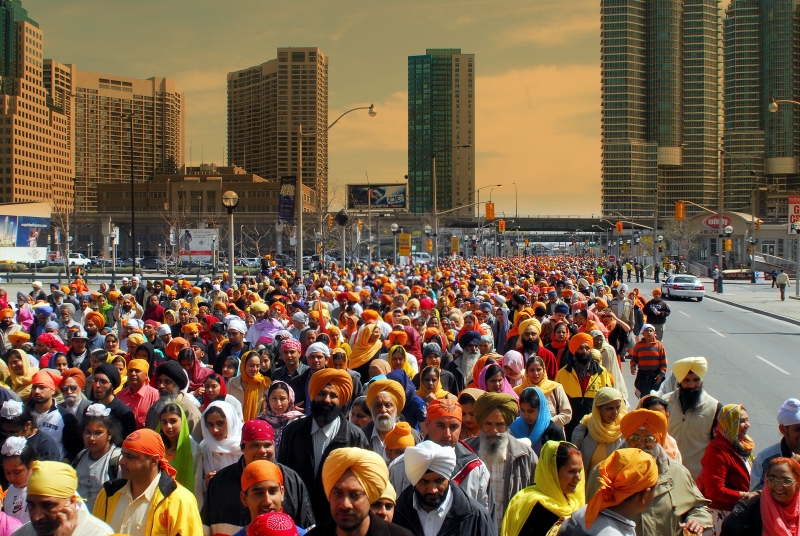 Years ago, I attended a Sikh retreat far from home – outside of the United States and outside of my “normal crowd.” It was interesting to experience Sikh life in a different country…and I think Bono had it right when he said, “We are one, but we’re not the same.”
Years ago, I attended a Sikh retreat far from home – outside of the United States and outside of my “normal crowd.” It was interesting to experience Sikh life in a different country…and I think Bono had it right when he said, “We are one, but we’re not the same.”
The first morning we all woke up at Amrit Vela and joined in Nit-Nem and Shabad Keertan. Everybody was in to it and nobody seemed distracted. It was one of those powerful “Sangat” experiences where you lose yourself and become part of the whole. I loved it! I was so energized after that Deevan and was excited for all the weekend’s activities to come…then came breakfast.
Continue Reading »
This week, Peter Bance published “Sovereign, Squire and Rebel: Maharajah Duleep Singh and the Heirs of a Lost Kingdom.” It includes some little known and interesting information on Rani Jindan- the youngest of Maharaja 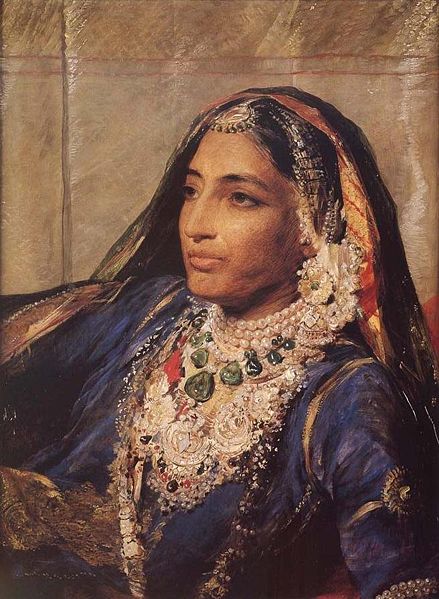 Ranjit Singh’s wives. While the tale of her son, Duleep Singh, has been well documented, less has been known about Rani Jindan.
Ranjit Singh’s wives. While the tale of her son, Duleep Singh, has been well documented, less has been known about Rani Jindan.
While researching a tome on the Duleep Singh family, which lived in exile on a sprawling country estate near Thetford, Norfolk, Mr Bance stumbled upon the gravestone of Jind Kaur in the catacombs of the Kensal Green Dissenters’ Chapel. Historians had assumed that the Maharani’s cremation occurred in India but here was a simple white marble tombstone in London with her name on it. [link]
So who was Rani Jind Kaur? Some things were previously known- that after the death of her husband, she became the Regent (acting head of state because the ruler is a minor) for her son, Duleep Singh.
To say that Jind Kaur was a thorn in the side of the East India Company would be an understatement. She was born into humble origins, the daughter of the Royal Kennel Keeper at the Sikh court in Lahore, but she was ravishingly beautiful and soon caught the attention of the Punjab’s greatest ruler, the one-eyed Ranjit Singh.
Having kept the British at bay for decades, Ranjit’s empire began to crumble with his death in 1839. Following a series of bloody succession battles, Jind emerged as regent for Duleep who was less than a year old when his father died. [link]
Rani Jindan was instrumental in organizing Sikh resistance to the British in the First and Second Anglo-Sikh wars.
 Last year we discussed Satnam Sanghera’s memoir, If You Don’t Know Me By Now: A Memoir of Love, Secrets and Lies in Wolverhamptom, and dialogued around the issue of mental health in the Punjabi Sikh community. The memoir was recently awarded the Mind Book of the Year Award for its literary contributions to raising awareness around issues of mental distress. The Boy with the Topknot, as it is now known, was picked from 110 entries by Mind, a non-profit organization in the UK committed to creating a “better life for everyone with experience of mental distress”.
Last year we discussed Satnam Sanghera’s memoir, If You Don’t Know Me By Now: A Memoir of Love, Secrets and Lies in Wolverhamptom, and dialogued around the issue of mental health in the Punjabi Sikh community. The memoir was recently awarded the Mind Book of the Year Award for its literary contributions to raising awareness around issues of mental distress. The Boy with the Topknot, as it is now known, was picked from 110 entries by Mind, a non-profit organization in the UK committed to creating a “better life for everyone with experience of mental distress”.
On winning the award last night, Sathnam Sanghera said:”It was such a strong shortlist, and this award is judged by some of the greatest authors in the UK, so this is a real privilege. There are hardly any books about Asian communities’ experiences of mental health problems, so I hope people read this book and it leads to more understanding.” [link]
I would highly recommend this book as I found the story to be sincere and enlightening. However, I would add that while it is important to provide this type of insight to the English-speaking literary community, it is just as (or perhaps even more so) important to ensure this type of literature is accessible to the Punjabi-speaking community. Perhaps we can strive to have these types of memoirs translated into Punjabi or made available via audiorecordings?
He locked the washroom door, unravelled the nine-metre turban, took a pair of scissors and started cutting. Ten minutes later, three feet of hair lay in a pile and Charanbir Singh sat down and cried.
Outside, his parents and grandmother were in tears. Two friends persuaded him to come out, but Charanbir, his head wrapped in a towel, rushed to his room.
That was a year ago. Charanbir, now 17, still shudders at the memory. “I had to cut my hair.” (Link)
One of ironies of life in the 21st century western world is that despite an unparalleled degree of freedom of religion, the majority of people seem to be opting for freedom from religion.
Last week, Raveena Aulakh, a reporter from the Toronto Star, put a Canadian twist on the worldwide issue of apostasy amongst Sikh Youth.
Sikhism dates back to 15th-century India. Adherents are required to not cut their hair, considered a visible testament to their connection with their creator. The turban was adopted to manage long hair and make Sikhs easily identifiable.
For many young men in Greater Toronto, that is the problem: They don’t want to stand out.
Like other new or second-generation immigrants, many Sikh youngsters are desperate to fit in with the school crowd, while others complain of racism because they wear the turban. Add to that cultural influences, peer pressure and the desire to assimilate.
The end result? Many youngsters cut their hair, leading to family friction and, in some cases, lasting estrangement.
As a counterpoint, in the article and video above, Pardeep Singh Nagra (of boxing fame) presents his thoughts on why he’s decided to keep his hair.
Fear & Guilt
I’ve often wondered why so many Sikh youth keep their hair through high school but cut it as soon as they feel free from their parent’s control? From my perspective I see this as symptomatic of a great challenge facing Sikhs around the world today. Somehow, someway, we have fallen into the trap of pushing Sikhi to the next generation with fear and guilt, rather than sharing Sikhi through love.
Take your typical Sikh family; actually take mine. My now 25 year old cousin in Punjab had wanted to cut his hair since he was a teenager but two things stopped him. He was afraid that if he cut his hair his dad would beat him and then disown him. Secondly, he knew that if he did get a haircut and shave he wouldn’t be able to look his crying mom in the eye.
Unfortunately, there was little positive reinforcement around Sikhi in his life. Sure there was Sikhi by osmosis: visiting Gurdwaras, gurbani playing in the background, the odd sakhi told by our visiting grandfather. However, my cousin had little exposure to the aspects of Sikhi (nitnem, kirtan, seva, simran) that would have connected him with his faith on a deeper level. Most of the discussions with his parents were a flavour of the famous Goodness Gracious Me clip. So not surprisingly, upon entering college, he too cut his hair. And sure enough, he became our family’s black sheep, making a kid with already low self-esteem, feel even worse.
June soon approaches and many in the Sikh community will take the time to remember the events beginning in 1984. While some traditional sites of remembrance, mainly Gurdwaras, will continue to fulfill their duties to celebrate those that gave their lives and remember those families devastated by the Indian state’s violence, especially encouraging are new Sikh youth initiatives. Last week I discussed the Jakara Movement Sikh Conference and even the initiative “Sukhmani Sahib for the Shaheeds.” Now in Canada, the Sikh Activists Network is hosting two tremendous events.
The Details:
When Lions Roar: A Night of Music, Poetry, and Performance
Remembering the Sikh Genocide of 1984Toronto: Friday June 5th, Crown Banquet Hall (Malton), 6pm
Vancouver: Friday July 3rd, Rhizome Café (Vancouver), 6pmAdmission is FREE, but give a donation so that they can continue this initiative

My last post was about what we knew at that time. Since then, there are new updates.
After the attack in the Vienna temple (actually a dera of the Sach Khand group), there are news confirmations that Sant Rama Nand has passed away from his injuries, while the Dera head Niranjan Das is in stable condition.
There are also reports of violence in Punjab. IBN live reports the death of 2 people in the Doaba region and also one should note that it seems that the army has been called in to parts of Punjab.
One person was killed and four others were injured as Army jawans opened fire in Lambra village, 30 kms from Jalandhar. Another person was killed after the police opened fire on protesters at Jalandhar Cantonment railway station. [link]
In some ways I believe that this is a tragedy of the 80s and 90s.
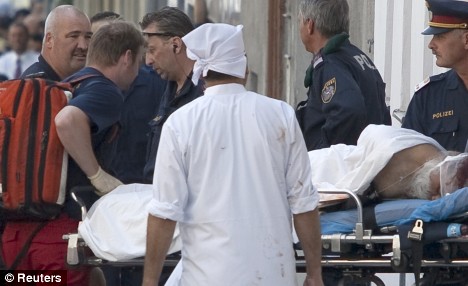 As suggested by our readers (pagh salute: ambi and an indian Sikh), I am posting on the tragedy in Vienna. The facts are still coming in, so we have little perspective on what exactly occurred.
As suggested by our readers (pagh salute: ambi and an indian Sikh), I am posting on the tragedy in Vienna. The facts are still coming in, so we have little perspective on what exactly occurred.
This much is known. In the Austrian capital of Vienna, six Sikh men carrying various weapons and a handgun entered a Dera [Some media are calling this a ‘Sikh temple’ or a ‘gurdwara’, but it seems to be a dera attached to the Sach Khand group]. The men proceeded to go towards the ‘preachers’ of the Dera and in the melee 16 people have been reported injured, including 6 seriously – two names have been reported amongst the injured – Niranjan Das and Sant Rama Nand – and the other 4 were the attackers (there are rumors that Sant Rama Nand may have been killed, but this has not yet been confirmed. Sant Rama Nand is one of the highest leaders of the SachaKhand Dera).
Some of the media is attempting to frame the dispute in terms of caste, asserting that the Dera is set up to honor Bhagat Ravi Das, whose own Bani can be found in the Guru Granth Sahib. Other reports for a cause have provided the following:
[the attackers] accused one or both of the preachers of being disrespectful of the Holy Book [Sri Guru Granth Sahib]. Indian news reports said the attackers were incensed that one of the preachers was given a ceremonial shawl considered a high Sikh honor. [link]
Still some of the local press has provided the following reason:
It was assumed by local media that the conflict between the temples like competing for worshipers might be the reason of this shooting incident. [link]
The story does not end there.
